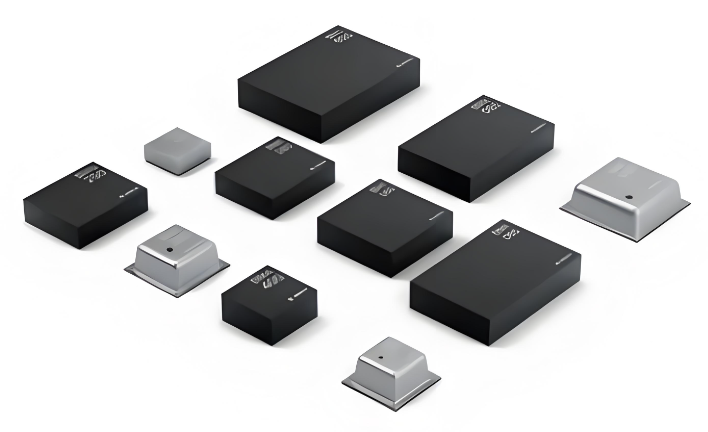MEMS, short for Micro-Electro-Mechanical Systems, are miniaturized devices that integrate mechanical components, sensors, actuators, and electronics on a single chip or within a small system. Typically ranging in size from micrometers to millimeters (1μm to 1mm), MEMS leverage microfabrication techniques—borrowed from semiconductor manufacturing—to create functional structures that interact with physical, chemical, or biological stimuli.
MEMS devices combine mechanical elements (e.g., beams, diaphragms, gears) with electrical components (transistors, capacitors) to sense, process, and respond to environmental changes. Key mechanisms include:
-
Sensing: Detecting motion, pressure, temperature, or chemicals via mechanical deformation (e.g., a diaphragm bending under pressure).
-
Actuation: Converting electrical signals into mechanical action (e.g., microvalves opening/closing to control fluid flow).
-
Integration: Merging these functions with electronics for signal processing, amplification, or wireless communication.
MEMS technology spans diverse applications, categorized by their primary function:
-
Accelerometers: Measure linear acceleration (used in smartphones for screen rotation, airbag deployment in cars).
-
Gyroscopes: Detect angular velocity, critical for navigation systems, drones, and virtual reality (VR) headsets.
-
Pressure Sensors: Monitor air pressure in tires (TPMS), medical devices (blood pressure monitors), and industrial equipment.
-
Microphones: Miniaturized acoustic sensors in smartphones, hearing aids, and voice-controlled devices.
-
Gas Sensors: Detect harmful gases (e.g., CO, methane) in smart home detectors and industrial safety systems.
-
Microvalves: Control fluid flow in medical pumps, inkjet printers, and lab-on-a-chip devices.
-
Micromirrors: Enable laser beam steering in projectors, LiDAR systems, and optical switches.
-
Resonators: Generate precise frequencies for timing in oscillators, used in wearables and communication devices.
-
Microphones & Speakers: MEMS microphones dominate consumer electronics for their small size and low power.
-
BioMEMS: Integrate MEMS with biological systems for lab-on-a-chip diagnostics, drug delivery, and DNA sequencing.
-
Miniaturization: Small size allows integration into portable devices (smartphones, wearables).
-
Low Power Consumption: Ideal for battery-operated electronics and IoT devices.
-
High Sensitivity: Precise detection of even minute changes (e.g., tiny pressure variations).
-
Cost-Effectiveness: Mass production using semiconductor manufacturing lowers per-unit costs.
-
Reliability: Robust design withstands harsh environments (automotive, industrial settings).
-
Consumer Electronics: Smartphone cameras (image stabilization), fitness trackers (motion sensing), smartwatches.
-
Automotive: Airbag triggers, tire pressure monitoring systems (TPMS), inertial navigation.
-
Healthcare: Medical sensors (glucose monitors), inhalers with dose counters, endoscopic tools.
-
Aerospace & Defense: Navigation systems, missile guidance, environmental monitoring in satellites.
-
Industrial IoT (IIoT): Pressure and temperature sensors for predictive maintenance in factories.
-
Telecommunications: Optical switches and filters for high-speed data transmission.
The global MEMS market is driven by demand for smart devices, automotive electrification, and IoT expansion. Key trends include:
-
Advanced Sensing: Integration with AI for real-time data analysis (e.g., MEMS in smart cities for air quality monitoring).
-
Miniaturization: Development of nanoscale MEMS (NEMS) for next-gen applications.
-
Biomedical Innovations: Wearable health trackers and non-invasive diagnostic tools.
MEMS, Micro-Electro-Mechanical Systems, MEMS sensors, accelerometers, gyroscopes, pressure sensors, MEMS actuators, BioMEMS, IoT sensors, MEMS fabrication.
MEMS technology continues to revolutionize industries by bridging the gap between the physical and digital worlds, enabling smarter, more efficient, and interconnected devices.
